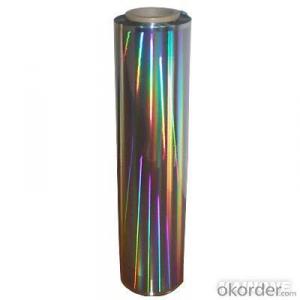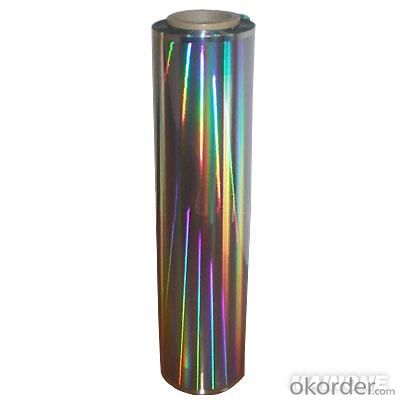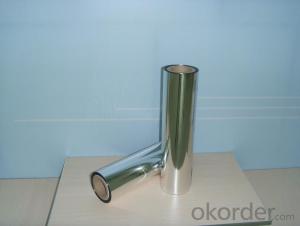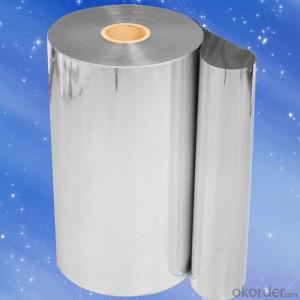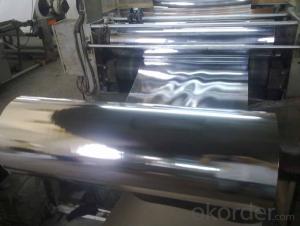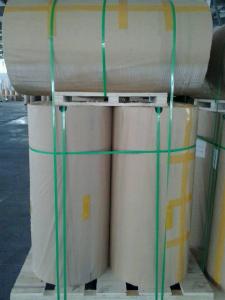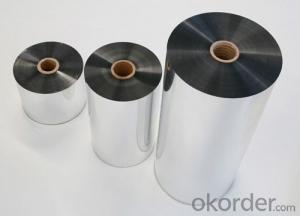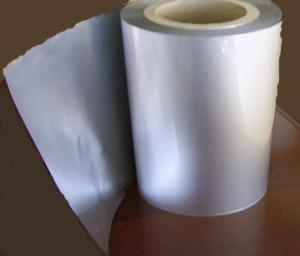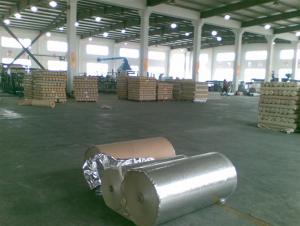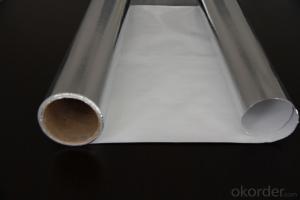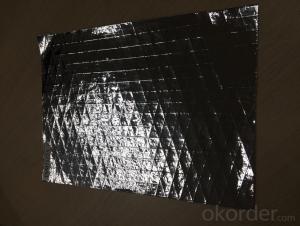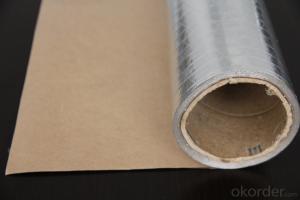Aluminum Foil Facing 7mic Aluminum Foil + 15mic Polyester for Foam Lamination
- Loading Port:
- Shanghai
- Payment Terms:
- TT OR LC
- Min Order Qty:
- 5000 m²
- Supply Capability:
- 1000000 m²/month
OKorder Service Pledge
OKorder Financial Service
You Might Also Like
Specification
Product Structure
Widely used for laminating with EPE insulation, Bubble insulation, woven fabric insulation, etc
● Aluminum foil – LDPE
● Aluminum foil- PET- LDPE
● Clear Transparent PET-Aluminum foil – LDPE
● Aluminum foil-Metallized PET- LDPE
● Metallized PET- LDPE
Product Application
Widely used for laminating with EPE insulation, Bubble insulation, woven fabric insulation, etc
Product Advantage
Light weight
• High manufacturing accuracy
• High strength
• Small inertia resistance
• Strong heat dissipation ability
• Good visual effect
• High reflective insulation
• Heat resistant, water proof, stable at high temperature;
• Environmentally friendly, no smell and not-toxic;
• Smooth and clear surface;
Product Packing
1. Waterproof paper then PVC shrinking Film
2. Kraft paper only
3. Woven cloth
4. Kraft paper or Water Proof Film then Metal/wooden pallet
5. (Also as your request. )
Product Remarks
1. The data above are typical results and subject to change without notice.
2. Tolerance: Weight and Thickness: ±10%; Width: ±3mm;
Length: Cut Roll & Log Roll ±0.3m, Jumbo Roll ±0.5%.
3. The products should be stored at room temperature and kept from wet and heat source.
4. It is essential, as with all pressure-sensitive tapes, that the surface to which the tape is applied must be clean, dry, and free of grease and oil.
5. The user should take test and do trial-application on the above products before coming into application so as to witness and ensure suitability for user’s special purpose and technique.
Product Data Sheet
PROPERTIES | UNIT | VALUE | TEST METHOD |
Basic weight | gsm | 43.5 | ASTM D646 |
Thickness | mic | 24.2 | ASTM D646 |
Tensile strength: M. D. X. D. | N/15mm | 14.5 14.5 | ASTM D882 |
Delaminating Values | N/15mm | 2.5 | ASTM D904 |
Reflectivity of foil surface | % | 95 | ---------- |
Temp. Resistance | -40°C 130°C | No Delamination No Delamination | ASTM C1263 |
Water vapor permanence | ng/N.s | 1.15 | ASTM E-96 |
Product Picture
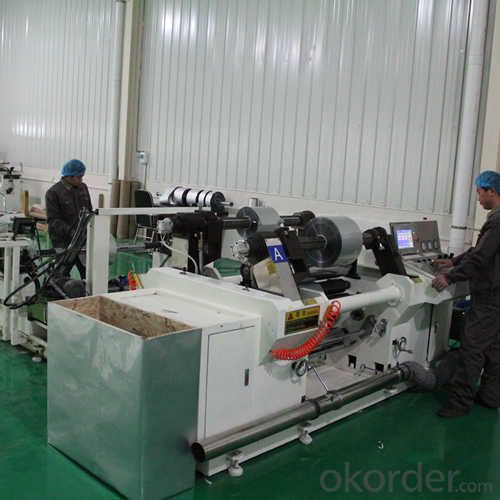
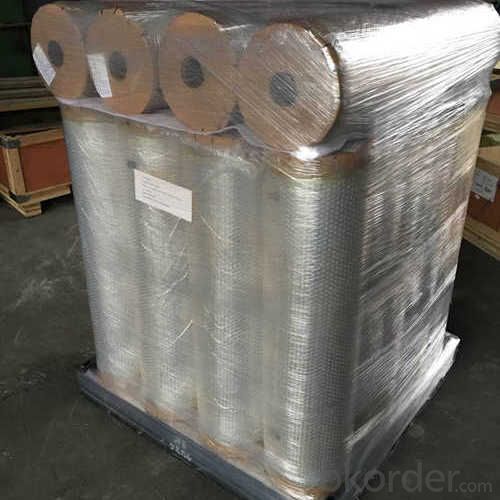
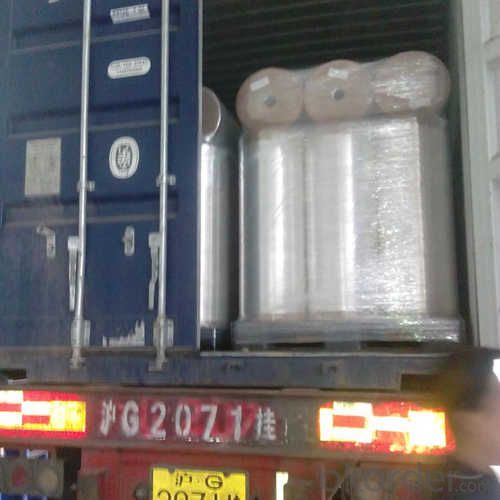

FAQ
1. What is the product keeping conditions?
The Aluminum Foil Facing should be stored at room temperature and kept from wet and heat source.
2. What is the guarantee years of the products?
We have established the international advanced quality management system,every link from raw material to final product we have strict quality test;We resolutely put an end to unqualified products flowing into the market. At the same time, we will provide necessary follow-up service assurance.
3. What is the delivery time of the order?
In the purchase of product within four working days, we will arrange the factory delivery as soon as possible. The specific time of receiving is related to the state and position of customers. Commonly 7 to 10 working days can be served.
- Q: What is the function or use of aluminum foil facing in construction or insulation?
- <p>Aluminum foil facing is used primarily for thermal insulation in construction and HVAC systems. It reflects radiant heat, reducing heat transfer and improving energy efficiency. It also serves as a vapor barrier, preventing moisture from passing through insulation, which can reduce its effectiveness. Additionally, aluminum foil facing can provide a clean, finished appearance and protect the insulation material from damage and contamination.</p>
- Q: This question asks for various purposes that aluminum foil facing can be used for, other than its conventional use.
- <p>Aluminum foil facing has several alternative uses. It can be used as a reflective surface to enhance the heat distribution in grilling or baking. It can also serve as a protective barrier in gardening to deter pests or as a makeshift sled for sliding on snow. Additionally, it can be used to clean stubborn stains or as a shield to protect surfaces from paint splatters during home improvement projects. Some people even use it for crafting or DIY projects due to its malleability and reflective properties.</p>
- Q: Is it safe and effective to use aluminum foil with a reflective side for baking purposes?
- <p>Yes, aluminum foil facing can be used for baking. The shiny side of aluminum foil is often used to cover baking dishes to prevent food from drying out, to create a steam effect, or to reflect heat for even cooking. However, it's important to avoid direct contact between the foil and the heating elements of the oven to prevent fire hazards. Always follow the manufacturer's guidelines for safe use and placement of aluminum foil in your oven.</p>
- Q: The user is asking if they can use paper plates and plastic utensils as an alternative to aluminum foil for their next meal.
- <p>Yes, you can use paper plates and plastic utensils instead of aluminum foil for your next meal. Paper plates are a great alternative for serving food and can be easily disposed of after use. Plastic utensils are also a convenient option, especially for outdoor meals or when you want to avoid washing dishes. However, it's important to consider the environmental impact of using disposable items. If you're concerned about sustainability, consider reusable options or biodegradable alternatives to minimize waste.</p>
- Q: Explain the differences between food wrap and aluminum foil facing in a few sentences.
- <p>Food wrap, also known as plastic wrap, is a thin, flexible plastic film used to cover and preserve food, keeping it fresh and protected from contaminants. It's typically clingy and transparent, allowing you to see the food inside. Aluminum foil facing, on the other hand, is a type of laminate that has a layer of aluminum foil bonded to a plastic film. This facing is used for various purposes, including increasing the barrier properties of the plastic, providing a shiny appearance, and enhancing the product's durability. It's often used in packaging to protect and preserve food items, but it's not as clingy or transparent as food wrap and is not meant for direct contact with food in the same way.</p>
- Q: Is it safe and hygienic to repurpose a piece of aluminum foil that was previously used for wrapping food?
- <p>It is generally not recommended to reuse aluminum foil that has been in contact with food. Used foil can have residues of food, grease, and bacteria, which can contaminate new food items. Additionally, the foil can tear or become thin in areas, reducing its effectiveness and potentially allowing food to stick to previously used, contaminated areas. For椋熷搧瀹夊叏 and hygiene, it's best to use a fresh piece of aluminum foil each time.</p>
- Q: What are the most suitable materials for creating aluminum foil facing?
- <p>The best materials for making aluminum foil facing are typically aluminum alloys, specifically 1100, 3003, or 8011 series alloys. These alloys offer excellent formability, corrosion resistance, and reflectivity, which are crucial for applications like insulation, construction, and heat management. Additionally, the facing material often includes a layer of polyester or polyethylene film to enhance durability and prevent tearing. The choice of material can also depend on specific requirements such as temperature resistance, UV resistance, and environmental conditions.</p>
- Q: Explain the differences between aluminum foil facing and plastic wrap when it comes to storing food.
- <p>Aluminum foil facing and plastic wrap are both used for food storage, but they have distinct properties. Aluminum foil facing is a moisture-resistant barrier that reflects heat, making it ideal for cooking and reheating food in the oven or microwave. It's also good for sealing in freshness and preventing freezer burn. Plastic wrap, on the other hand, is a clingy film that tightly seals around food to keep it fresh. It's transparent, allowing you to see the contents, and is useful for covering dishes and bowls. However, it's not heat resistant and can melt or release harmful chemicals when heated, so it's not suitable for cooking or reheating food.</p>
- Q: This question asks for a method to create a facing made of aluminum foil.
- <p>To make your own aluminum foil facing, you'll need aluminum foil and a suitable adhesive. Start by cutting the aluminum foil to the desired size and shape. Apply a layer of adhesive to the back of the foil, ensuring it's evenly spread. Press the foil onto the surface you want to cover, smoothing out any bubbles or wrinkles. Use a knife or scissors to trim any excess foil. Allow the adhesive to dry completely before handling. This creates a reflective surface that can be used for insulation, decoration, or other purposes.</p>
- Q: Describe the most effective method for cleaning aluminum foil facing surfaces after they have been used.
- <p>The best way to clean aluminum foil facing after use is to gently wipe it with a soft, damp cloth to remove any residue or food particles. Avoid using abrasive materials or harsh chemicals, as they can scratch the surface. If there is stubborn residue, a mild dish soap can be used with warm water. After cleaning, dry the surface thoroughly to prevent water spots and potential damage. Regular cleaning helps maintain the appearance and functionality of the aluminum foil facing.</p>
Send your message to us
Aluminum Foil Facing 7mic Aluminum Foil + 15mic Polyester for Foam Lamination
- Loading Port:
- Shanghai
- Payment Terms:
- TT OR LC
- Min Order Qty:
- 5000 m²
- Supply Capability:
- 1000000 m²/month
OKorder Service Pledge
OKorder Financial Service
Similar products
Hot products
Hot Searches
Related keywords
